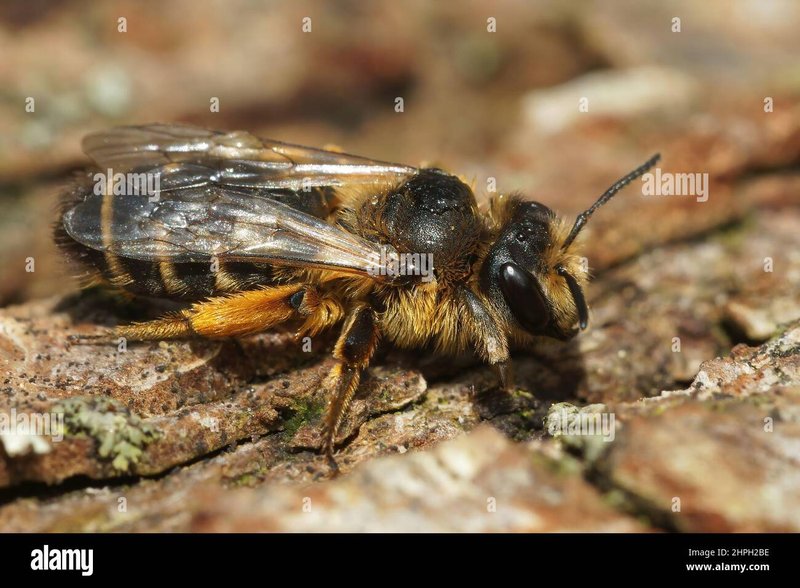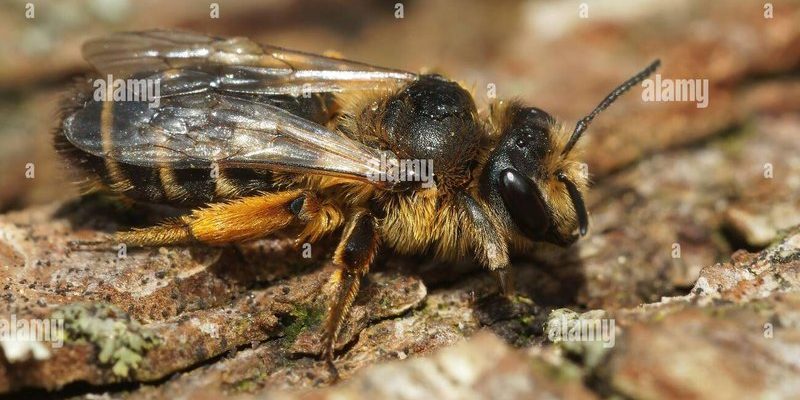
Identifying mining bees can feel a bit like playing detective. It’s about gathering clues—like their unique nesting habits and physical features—to distinguish them from other types of bees. So, grab a cup of coffee (or tea!), and let’s dive into the world of mining bees. You’ll soon see just how intriguing these little pollinators can be.
What Are Mining Bees?
Mining bees belong to the family Andrenidae and are part of a large group of solitary bees. Unlike honeybees, which live in colonies, mining bees prefer to go solo. Each female mining bee digs her own nest in the ground, hence the name “mining.” These nests often look like tiny holes in the soil, which is a clue for you when you’re trying to identify them.
So, why should you care? Well, mining bees play a vital role in pollination, much like their more social cousins. They help pollinate many wildflowers and crops, which is crucial for biodiversity and food production. Understanding how to identify them can help you appreciate their role in the ecosystem and encourage them to thrive in your own garden.
Physical Characteristics of Mining Bees
Identifying mining bees starts with knowing what they look like. In general, mining bees are small to medium-sized, usually ranging from about 8 to 15 millimeters in length. They have a hairy body, which is great for pollen collection, and their coloration can vary significantly. You might find them in shades of black, brown, or even metallic green.
If you’re looking closely, here are some key features to observe:
- Facial Features: Mining bees often have distinctive facial structures. Look for wide, smooth faces with large eyes that help them navigate while foraging.
- Body Hair: Their bodies are covered in fine hairs, which can often look fuzzy. This fuzziness helps them collect pollen and can vary in color depending on the species.
- Stinger: While most bees have a stinger, mining bees are generally not aggressive. They rarely sting unless threatened, so you can observe them closely without worry.
By keeping an eye on these characteristics, you can start to differentiate mining bees from other bees more easily.
Where to Find Mining Bees
Mining bees have a preference for open habitats where they can dig their nests. You’ll often find them in gardens, meadows, and even along roadside verges. Look for areas with bare soil or sparse grass, as these are prime nesting sites. They tend to avoid shaded areas since they rely on sunlight to warm their nest and increase their activity.
They’re usually seen during the spring months when flowers bloom, as that’s when they’re most active. If you want to spot some mining bees, head out on a sunny day and look for them buzzing around flowers or hovering close to the ground. Their secretive nature means they might not be as obvious as other bees, but with patience, you can catch a glimpse of their fascinating behaviors.
Nesting Habits of Mining Bees
What sets mining bees apart is their unique nesting behavior. They dig burrows in the soil, often creating a network of tunnels. These nests can look like little mounds of soil or small holes in the ground. A female mining bee can lay up to 30 eggs in her nest, and each egg is packed with pollen and nectar to feed the developing larva.
Here’s what to look for if you want to find their nests:
- Nest Structure: The nests can have one or multiple entrances. If you spot several holes clustered together, it’s likely a mining bee colony.
- Soil Texture: Mining bees prefer sandy or loose soil that’s easy to dig. This makes them less likely to nest in clay-heavy areas.
- Seasonality: You’ll typically see their nests in early spring, around the same time they begin foraging for food.
By understanding their nesting habits, you not only get to identify mining bees better but also appreciate the complex lives they lead just below our feet.
Pollination and Their Ecological Role
Mining bees are unsung heroes in the world of pollination. While honeybees get a lot of attention, mining bees are just as crucial for many plants, especially wildflowers. They tend to be more effective at pollinating some crops than honeybees due to their more intimate foraging techniques.
Here’s how mining bees contribute to the ecosystem:
- Crop Pollination: They are highly efficient at pollinating certain crops, including blueberries and cherries. Their foraging habits mean they cover a wide range of flowers.
- Biodiversity: By pollinating a variety of flowers, mining bees help maintain plant diversity, which is vital for healthy ecosystems.
- Support for Other Wildlife: Their role in pollination benefits not just plants but also other wildlife that depends on those plants for food and shelter.
So, when you spot a mining bee buzzing happily, remember that it’s not just a cute insect; it’s a key player in the health of our environment.
Common Misidentifications
Identifying mining bees can sometimes lead to confusion, especially since they can resemble other types of bees or insects. Here are a few common misidentifications to be aware of:
- Honeybees: Unlike mining bees, honeybees are social and live in large colonies. If you see a bee hanging around a hive or working in groups, it’s probably a honeybee.
- Wasps: Wasps often have a more slender body and lack the fuzziness of mining bees. They’re also more aggressive, making them easy to differentiate.
- Bumblebees: Bumblebees are larger and usually have a more robust build compared to mining bees. Their fuzzy bodies are great for collecting pollen, but they prefer to nest in colonies.
By knowing these differences, you’ll become a better bee detective and help protect these important pollinators.
How to Encourage Mining Bees in Your Garden
If you want to attract mining bees to your garden, there are several steps you can take to create a friendly environment for them. Here are some easy ways to help:
- Leave Bare Ground: Avoid covering all your soil with mulch or grass. A few patches of bare ground encourage nesting.
- Plant Native Flowers: Native plants provide the best food resources for mining bees. Consider planting a variety of flowers that bloom at different times throughout the season.
- Avoid Pesticides: Chemicals can harm bees and disrupt their habitats. Opt for natural pest control methods whenever possible.
Your little efforts can make a big difference in attracting mining bees and helping them thrive!
In closing, identifying mining bees might seem challenging at first, but with a little knowledge and patience, you can learn to appreciate these amazing pollinators. From understanding their physical characteristics and unique nesting behaviors to recognizing their vital role in our ecosystems, mining bees are worth getting to know. So next time you’re out in your garden or a local meadow, take a moment to look for these quiet but important creatures. You might just find yourself fascinated by their world!

